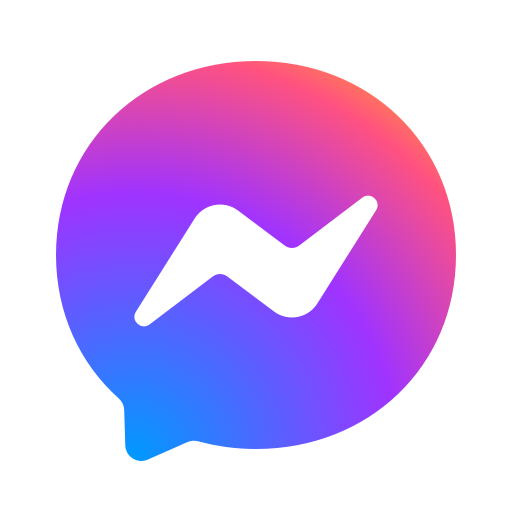| App Name | Messenger |
|---|---|
| Publisher | Meta Platforms Inc |
| Genre | Communication |
| Update on | Oct 24, 2024 |
| Requirements | 4.4 and up |
| Get it on |
|
In today’s hyper-connected world, instant communication has become a cornerstone of both personal and professional interactions. Among the myriad of tools that have emerged, Messenger, specifically Facebook Messenger, has become a prominent platform facilitating instant communication. This article delves into the evolution, features, advantages, and drawbacks of Messenger, highlighting its role in shaping modern communication.
Early Days and Transition
initially launched as Facebook Chat in 2008, revolutionized how users interacted on the social media platform. In 2011, Facebook revamped its chat system, introducing Messenger as a standalone app. This transition marked a significant shift, allowing users to send messages independently of the main Facebook app. Over the years, Messenger has undergone numerous updates, integrating features that cater to the evolving needs of its vast user base.
Expansion and Integration
It has continuously expanded its capabilities, integrating various functionalities beyond simple text messaging. From voice and video calls to the incorporation of bots and payment systems, It has evolved into a multi-faceted communication tool. The integration of Instagram DMs into Messenger further exemplifies Facebook’s commitment to creating a unified communication ecosystem.
Key Features of Messenger
Instant Messaging
At its core, Messenger provides seamless instant messaging, allowing users to send text messages, photos, videos, and voice messages. The ability to see when someone is typing and read receipts enhances the real-time communication experience, making conversations more dynamic and interactive.
Voice and Video Calls
Messenger’s voice and video call features have become essential, particularly in a world where remote communication is increasingly prevalent. The platform supports group calls, accommodating both personal and professional needs. The high-quality video and audio ensure that users can stay connected regardless of geographical distances.
Bots and Automation
Messenger’s bot platform has opened new avenues for businesses and developers. Bots can handle customer service inquiries, provide information, and even facilitate transactions. This automation enhances user experience and allows businesses to operate more efficiently.
Payments and Transactions
Messenger’s integration of payment systems allows users to send and receive money directly through the app. This feature, available in select regions, simplifies transactions and adds another layer of convenience for users.
Stories and Status Updates
Borrowing from the success of similar features on other platforms, Messenger introduced Stories and status updates. Users can share ephemeral content, enhancing the social aspect of the app and providing a more holistic communication experience.
Ubiquity and Accessibility
Messenger’s widespread adoption is one of its most significant advantages. With over a billion active users, the platform provides a vast network for personal and professional connections. Its accessibility on various devices, including smartphones, tablets, and desktops, ensures that users can stay connected anytime, anywhere.
User-Friendly Interface
Messenger’s intuitive interface makes it easy for users of all ages to navigate and utilize its features. The app’s design focuses on simplicity and functionality, ensuring that even the least tech-savvy individuals can communicate effectively.
Enhanced Connectivity
Messenger’s ability to integrate with Facebook and Instagram creates a seamless communication experience across multiple platforms. This interconnectedness allows users to manage their social interactions more efficiently, consolidating messages from different sources into one app.
Security and Privacy Features
Facebook has implemented various security measures to protect users’ data and privacy on Application. End-to-end encryption for secret conversations ensures that messages remain confidential. Additionally, users can control who can contact them, block unwanted messages, and report suspicious activity.
Privacy Concerns
Despite its security features, It has faced criticism over privacy issues. Facebook’s data collection practices and the potential for data breaches raise concerns about user privacy. The integration of Messenger with Facebook’s broader ecosystem means that user data is often shared across platforms, leading to unease among privacy-conscious individuals.
Dependency on Facebook Ecosystem
Messenger’s reliance on the Facebook ecosystem can be seen as a double-edged sword. While it offers seamless integration, it also means that users are tied to Facebook’s broader data practices and policies. Those who prefer to limit their engagement with Facebook may find this dependency restrictive.
App Performance and Resource Usage
Messenger’s extensive features come at the cost of performance and resource usage. The app can be resource-intensive, leading to slower performance on older devices. Additionally, the frequent updates and new feature integrations can sometimes introduce bugs and stability issues.
Advertising and Monetization
Messenger’s monetization strategies, including the introduction of ads, have been met with mixed reactions. While advertising helps keep the platform free, it can also disrupt the user experience. The balance between monetization and user satisfaction remains a challenge for Facebook.
The Role of Messenger in Modern Communication
Personal Communication
It has transformed how people connect on a personal level. The platform’s instant messaging, voice, and video call features allow users to maintain relationships regardless of distance. The ability to share multimedia content and updates enhances the depth and richness of personal interactions.
Professional Communication
In the professional realm, Messenger serves as a valuable tool for networking and collaboration. Its group chat and video conferencing features support remote work and team communication. Businesses can also leverage This for customer service, marketing, and engagement, creating a direct channel to their audience.
Social Media Integration
Messenger’s integration with Facebook and Instagram highlights its role in the broader social media landscape. Users can seamlessly transition between browsing their social feeds and engaging in conversations. This integration supports a more cohesive social media experience, allowing users to interact and share content effortlessly.
Conclusion
It has undoubtedly carved out a significant place in the digital communication landscape. Its evolution from a simple chat tool to a comprehensive communication platform demonstrates its adaptability and relevance. The app’s features cater to a wide range of needs, from personal interactions to professional collaborations.
However, the platform’s advantages come with notable drawbacks, particularly regarding privacy concerns and resource usage. As Application continues to evolve, striking a balance between functionality, user experience, and privacy will be crucial.
Read more:
https://en.wikipedia.org/wiki/Messenger_(software)

